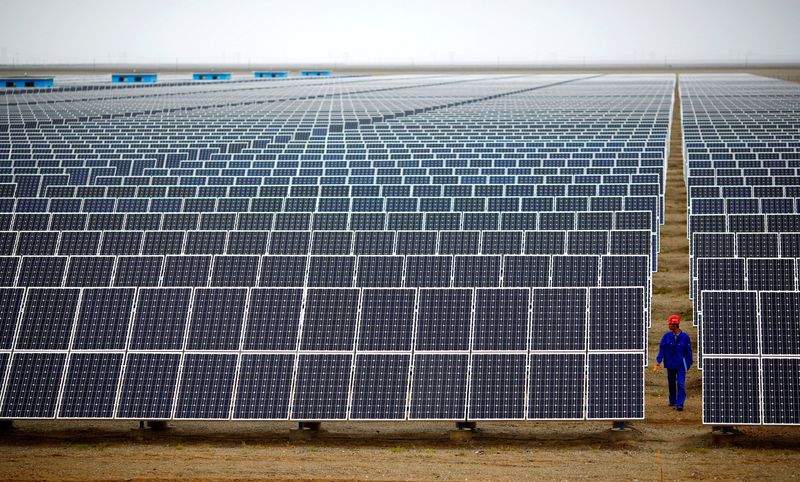BEIJING (Reuters) - China's top economic planning agency said on Sunday it was taking steps to scale back subsidies for renewable energy projects after a boom in solar and wind power installations.
China broke its own records for new solar installations in 2024 with installed capacity up 45% from the previous year. China now has almost 887 GW of installed solar power, more than six times the capacity of the United States, according to data from the International Renewable Energy Agency.
The surge in installations meant China hit its 2030 target six years ahead of schedule, underscoring the speed of its clean energy rollout at a time when President Donald Trump has pulled the United States out of the Paris climate deal for a second time and pledged to make it easier to drill for oil and gas.
China's National Development and Reform Commission (NDRC) said together with China's energy administration it had issued "market-oriented" changes to policies intended to encourage clean energy projects.
The NDRC said China's clean energy capacity of all kinds had reached more than 40% of the economy's total energy generation capacity, in part because of the support of a system that guaranteed prices for renewable energy sold to the grid.
"The cost of new energy development has dropped significantly compared to earlier stages," the NDRC said in a statement.
The agency said any new projects completed after June this year would face payments for electricity based on "market-based bidding".
The NDRC said it expected there would be no impact on the price for residential users and farming and that power prices would be "basically the same" for industrial and commercial operations after the change took effect.

The NDRC said it would work with local governments across China on the implementation of the plan. It did not provide details of the pricing formula it would introduce.
Less generous subsidies for new solar farms could add pressure on China's solar industry, where overcapacity relative to global demand has sent prices for solar panels plunging and threatened to drive smaller producers into bankruptcy.

